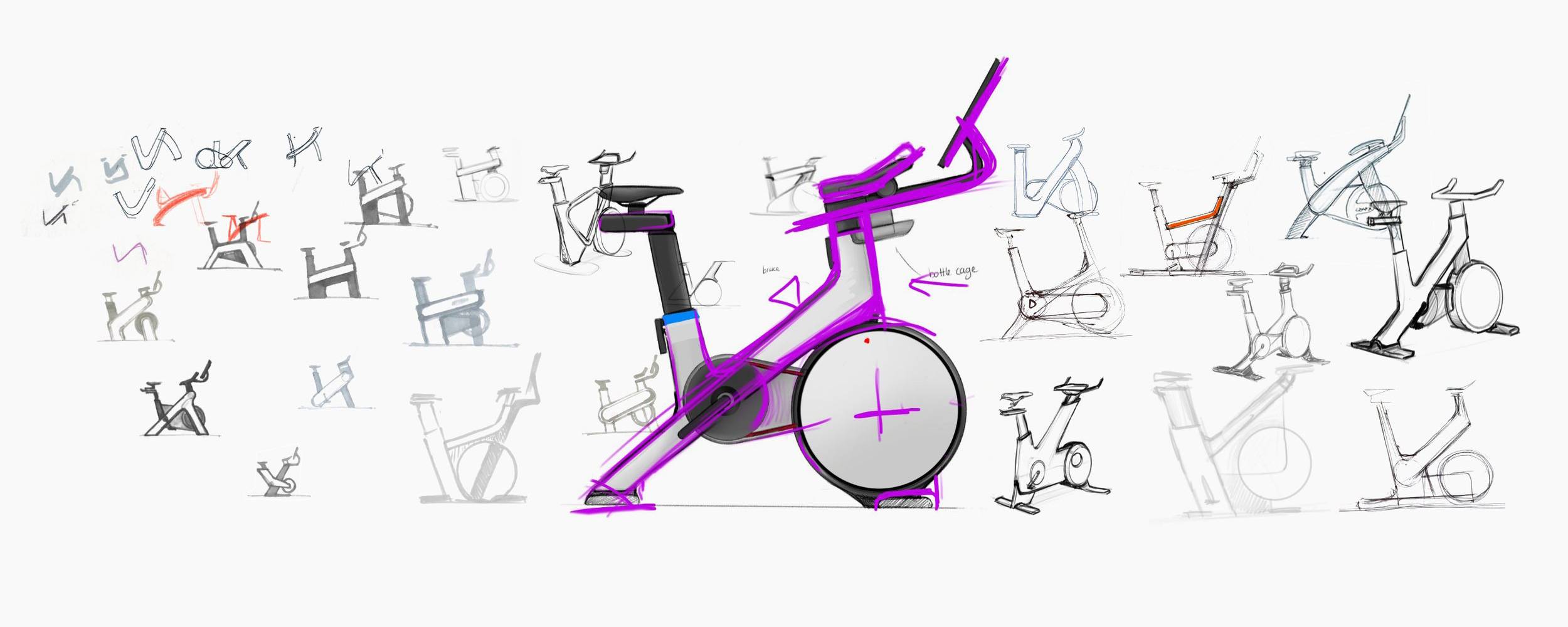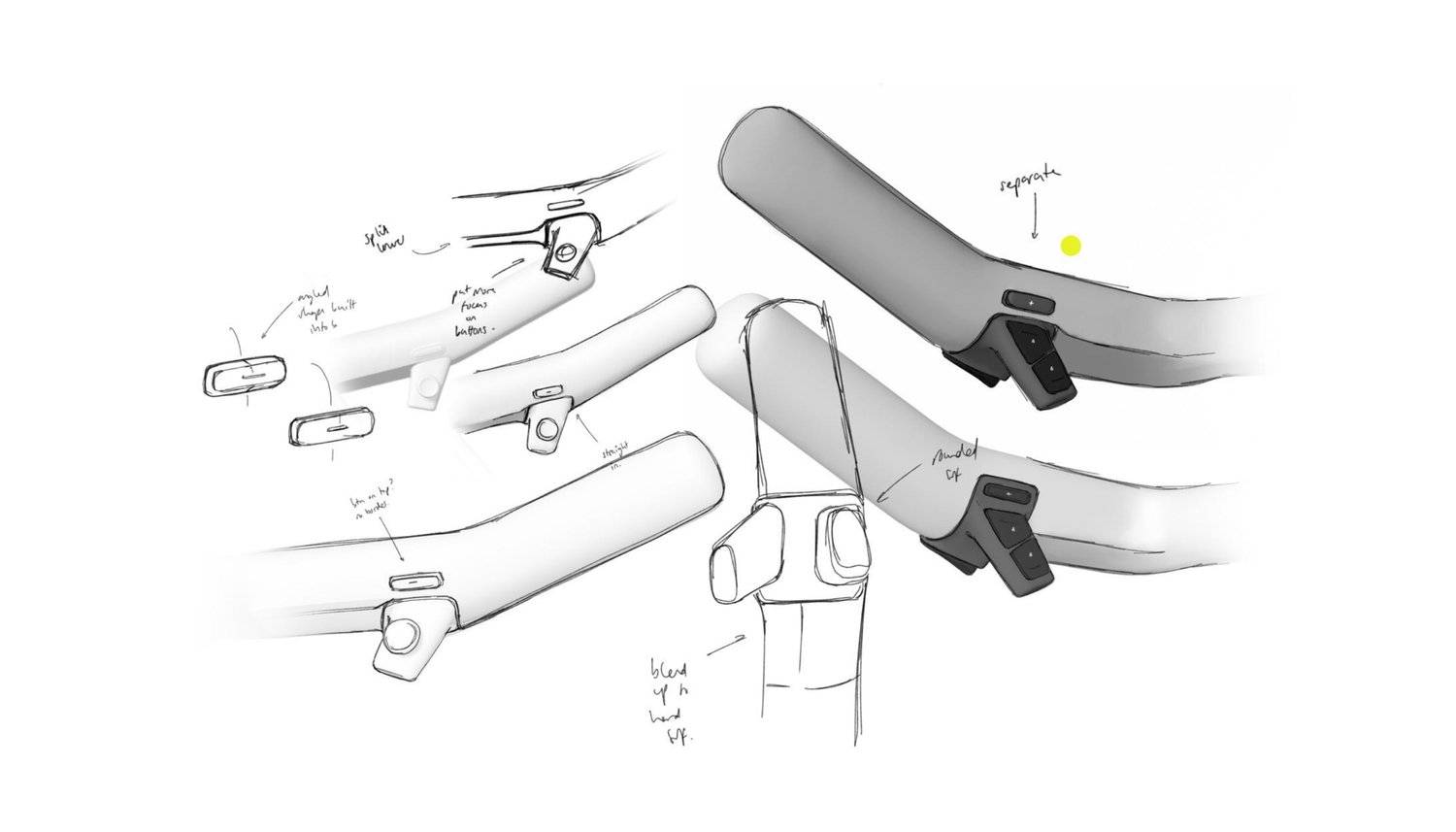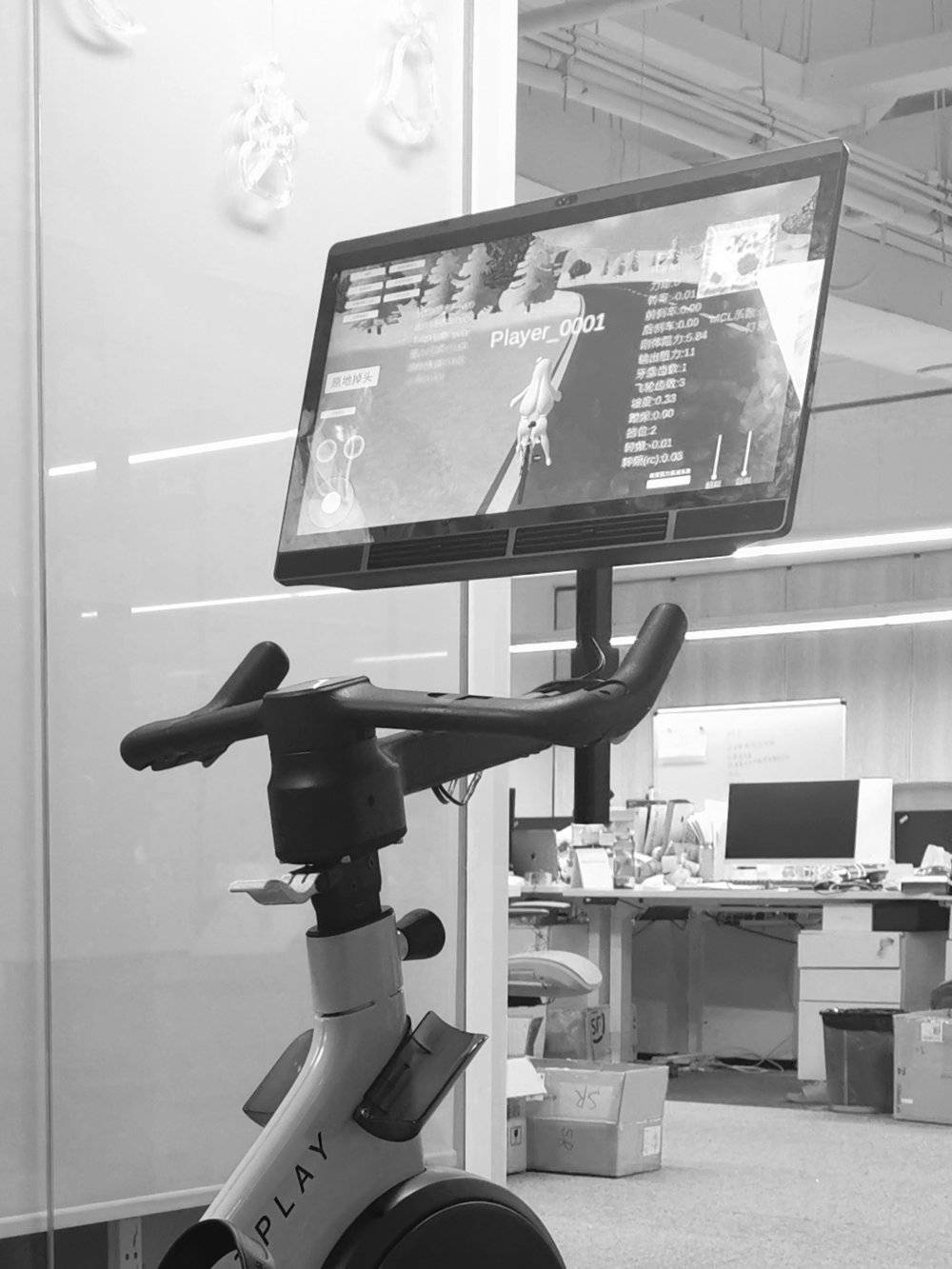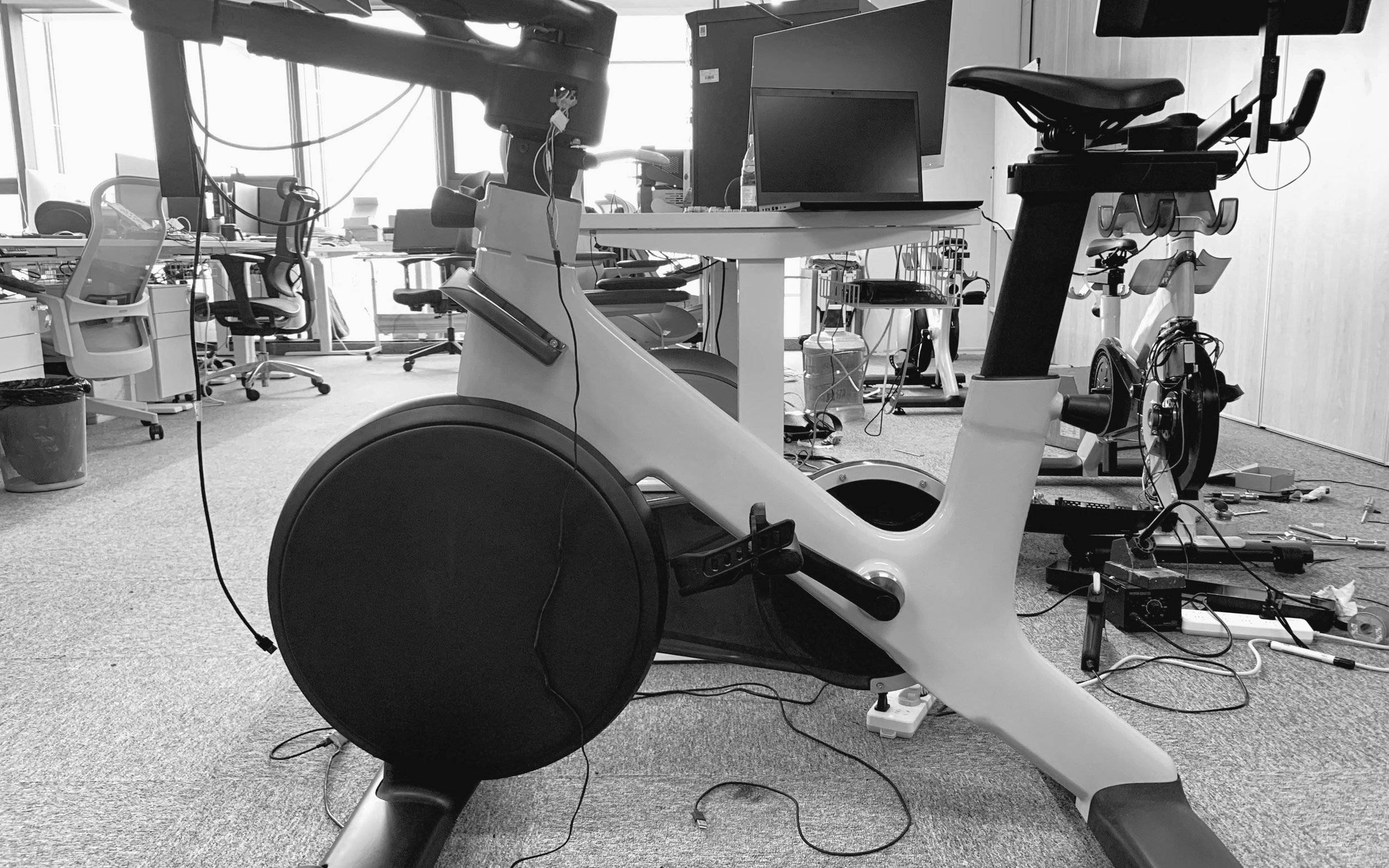Strategy|Industrial Design|Visualization
Smart Gaming Bike
We were presented with the opportunity to develop the next generation
of home exercise equipment — A motivating and fun way for people to
get and stay fit at home.
Our aim was to design a product that intelligently motivates you to
achieve your fitness goals without the need for an instructor. To do
this we combined gaming and smart technology to add depth to the home
exercise experience.
Our smart gaming bike has several unique features including gaming
controls with lockable steering, a digitally switchable hub and a fan
built into the display that links gaming achievements to physical
rewards.
We randomly generated hundreds of bike silhouettes to inspire our form
development. We wanted to maintain the feeling of a bike frame, while also
carefully integrating a number of new technologies into the compact form
factor.



We chose a direction which highlights both the frame and the flywheel
enclosure in a dynamic silhouette. Our choice was influenced by three
factors:
-
1. The large spinning flywheel needed to be enclosed for safety but
we didn't want to hide it entirely. To maintain a high-performance
feeling we partially revealed the mechanical drive-train and
flywheel using a transparent cover.
-
2. Many exercise bikes are built with the same standard structure
where a large welded shoulder joint visually dominates the design.
Instead we hid this part of the frame to make an iconic element of
the flywheel.
-
2. The digitally switchable hub. This enables both fixed and
free-wheel riding, so gamers can be road racing one minute and
track cycling the next. The extra mechanics meant there was more
structure to incorporate around the flywheel.


The fan is neatly hidden inside the display housing. It not only cools but
intelligently simulates the game environment. For instance, if you hit an
in-game speed boost, expect a cool blast of air. Using physical rewards
for in-game achievements helps to motivate players without the need for an
instructor.
The handlebar has 20 degrees of rotation for steering. Buttons simulate
breaking and gear change, plus there are two action buttons and a joystick
to support a wide range games.
The biggest challenge for the handlebar was positioning the gaming
controls in a way where riders have the dexterity to play comfortably
while also supporting their body-weight in an active riding position.

We designed three main grip positions. An upright cycling posture where
you can rest but still steer. An active position with a large palm support
which is most natural for gaming and steering. And lastly an extension
which provides more balanced support when riding out of the saddle.
After physically testing many different prototypes we realized that to
give riders a more secure grip on the handle the buttons should be
lowered, separating them from the main handle structure.
To make the gaming more immersive and tactile we proposed using sensors in
the handlebar to track changes in the riders position. This unlocks
another level of interaction as the game character can closely mimic small
movements from players, without introducing more buttons and complexity.
In addition, the sensors can be used to gamify post-workout stretching to
help foster healthier exercise habits.
After significant development, this project was unfortunately put on hold.
The appetite for home exercise equipment declined in-line with the
loosening of global Covid restrictions. On the plus side we developed a
broad knowledge and experience through this project and would be thrilled
to work in the exercise and fitness space again in the future.































